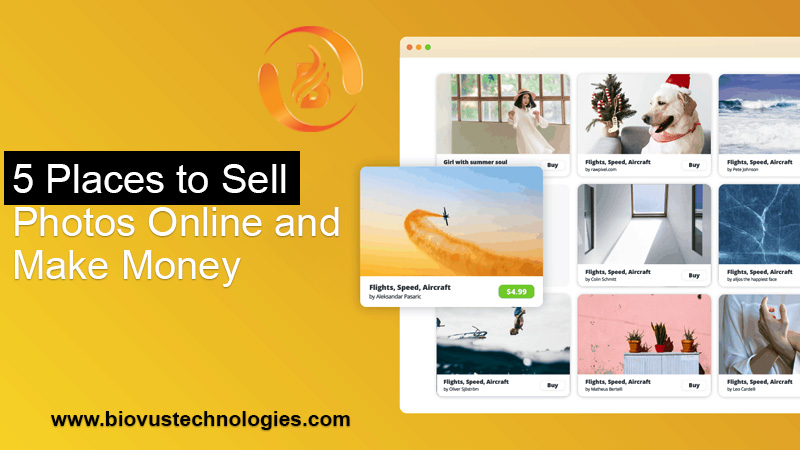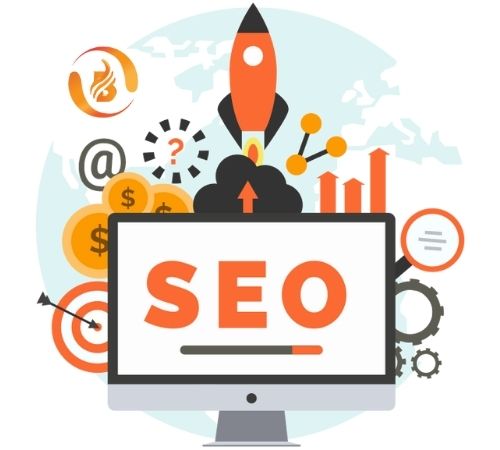An effective digital marketing strategy helps you grow your business by expanding and strengthening customer engagement in the most competitive online arenas. However, each strategy has advantages, drawbacks, and return on investment. This article will examine a few explicit models and explain how to construct an exhaustive digital marketing strategy that conveys quantifiable outcomes.
Seven types of digital marketing strategy
Numerous digital marketing tactics are available. We’ll look at our current industry’s seven most successful strategies because some produce better results than others.
1. Inbound marketing
Inbound marketing is the ecosystem of strategies, tools, and tactics a marketer employs to turn a website visitor into a paying customer. It incorporates content advertising, email advertising, nurturing leads, SEO, marketing automation, website optimization, and site investigation.
Inbound marketing is an all-encompassing strategy for attracting, qualifying, sustaining, and delighting customers and prospects. It is not only used once or for a short time; instead, it focuses on building a relationship with customers over the long term.
Key Features of Inbound marketing
It’s reasonable:
Inbound marketing can help you save money while increasing your return on investment. In the hope that you will be successful, you will target a specific group of people rather than everyone.
Credibility and confidence:
At the point when possibilities and clients do their exploration and find that your substance responds to their inquiries, your business is situated as a reliable industry master instead of only a deals-hungry element.
Focus on relationships:
Through inbound marketing, you can build trusting relationships that lead to repeat business and sales. Content for inbound marketing brings qualified visitors to your website and provides helpful content that motivates them to purchase at each marketing funnel stage.
2. Content marketing
Content marketing is centered around responding to individuals’ inquiries and genuinely helping them through satisfaction instead of intruding on them with spontaneous promotions. It includes blog posts, landing pages, videos, podcasts, infographics, white papers, eBooks, case studies, and other content.
Most of the time, content marketing has multiple objectives. It can be used for:
- Increment brand mindfulness
2. Boost customer loyalty
3. Inform your intended audience
4. Nurture and convert leads
Key Features of Content Marketing
Strong associations with clients:
Content marketing allows you to build relationships with possibilities and clients over the long haul. It also pushes them closer to the finish line, increasing the likelihood that they will choose you over your rivals when they are ready to buy.
Enhanced SEO:
The quality content will further develop your site’s Web optimization, allowing you to enjoy more organic site traffic that converts guests into purchasers.
Increased Brand authority:
If you create engaging and instructive content, you can establish yourself as an authority in your field. The people you’re trying to reach will then turn to you for help with their issues.
SEO is the most common way of streamlining your site and substance to accomplish higher rankings in web searches and increment the amount of organic traffic to your website.
Includes a variety of strategies, such as:
- Creating content of high-quality
2. focusing content optimization on user needs and keywords, Consolidating meta information
3. Ensuring that your website is search engine optimized
Ultimately, SEO aims to increase leads and sales by organically bringing in exemplary visitors
Key Features of SEO
Higher rates of conversion:
An optimized website is quick, simple, and works on all devices. As a result, it has a better chance of converting users into paying customers.
Increased awareness of the brand:
If your content appears highly in search results, you can increase visitors’ trust and awareness of your brand. Visitors will likely buy your goods and services with a solid online presence.
Savings the cost over the long term:
When content is created, it should attract more visitors over time. You will still need to produce high-quality content regularly. Still, you will be able to target users actively looking for your products and services without having to invest money regularly.
4. Social Media Marketing
Social media platforms like Facebook, Twitter, LinkedIn, and Instagram are used in social media marketing to:
- Make use of your content, goods, or services.
- Enhance brand visibility and awareness.
- Acquire fans or supporters.
- Keep current and potential customers interested.
- Bring visitors to your website.
It requires continuous promotional spending and, more often than not, a site greeting page planned explicitly for clients based on that advertisement spending. When your promoting spend closes, the site traffic, preferences, and supporters end, too.
Key Features of Social Media marketing
Cost-effective marketing:
With a generally low budget, you can utilize online entertainment promotion to open your crowd to your image when they’re not mulling over everything. However, to get the most out of your advertising budget and achieve high conversion rates, you must incorporate A/B testing or another kind of optimization.
Interaction with the audience:
Social media is used by roughly 70% of the world’s population, with the majority spending approximately three hours daily on it. Pick the right channel, explore how the promoting stage functions, and maximize the chance to associate straightforwardly with your crowd.
Increased brand loyalty:
According to research, 80% of people with a positive social media experience with a brand are likely to recommend it to friends and family.
5. Email Marketing
Email marketing is sending promotional and informational emails to establish relationships with your audience, convert prospects into buyers, and convert one-time buyers into devoted fans of your brand.
These emails may represent your company and discuss exclusive deals, website content, upcoming sales, or general messages.
Key Features of Email Marketing
Traffic to your website:
Your messages ought to contain connections to pages on your site. The open rate (the proportion of recipients who opened your email) and the click-through rate (the proportion of recipients who clicked on a link in the email) are key performance indicators.
Cost Effective:
Email marketing is generally practical, unlike other promoting methodologies like standard mail, SEM, or SMM. Your investment will include the cost of a person to manage the program and a subscription to email marketing software that can send thousands of emails simultaneously.
Conveys Targeted messages:
Everybody on an email list has selected to get data, which implies they need to hear from you! By further sectioning your rundown, you can convey super-designated data that will probably be generally welcomed.
Product demonstrations, interviews with thought leaders in your industry, customer testimonials, and how-to videos are all examples of video types that can be used to promote your goods, services, and brand. You can include videos on your website, PPC landing pages, and social media platforms to increase sales and conversions.
Key Features of Video Marketing
Developed Search engine optimization:
If a marketer uses a video on their website, they are often more likely to appear on the first page of Google results. This is because including a video on a website improves SEO and raises page rank.
Increasing conversion rates:
When advertisers remember a video for a presentation page, change rates can increase rapidly and enhance brand recognition.
7. PPC Marketing
Pay-per-click advertising is a type of digital marketing that permits brands to display their promotions on search engine result pages, websites, and virtual entertainment platforms such as social media. These promotions are served to clients seeking specific catchphrases connected with the promoter’s items or administrations.
You might have known about search engine optimization, which centers around helping organic rankings through satisfied promoting and different techniques. It’s critical to note that these advancements are not tradable. Notwithstanding, the two make for an extraordinary digital marketing technique while working as a couple.
Key Features of PPC advertising
Quick outcomes:
Utilizing search engine optimization (SEO) to support your organic pursuit positioning can take weeks, months, or even years. With PPC, you can soon be on page one for your target keywords.
Brand Mention:
Regardless of whether they get any snaps, PPC advertisements get your name before your interest group.
A competitive edge:
You might not want to compete with a more extensive organization on a high-traffic term like “fabricating.” However, you can utilize long-tail keywords (e.g., “high-volume accuracy infusion forming”) to advance your fortes and reach your optimal client.
Value for your money:
Profit from venture (return on investment) will generally be high for PPC, with a new Google report showing that the typical return on ROI for Google Promotions is 800%. That implies that organizations make an average of $8 in income for each $1 spent on Google advertisements.
Better control:
With PPC, you have some control over when and to whom your advertisements will appear, permitting you to focus on your ideal crowd with pinpoint exactness and contact them right now, and they’re prepared to change over.
visit us at: www.biovustechnologies.com







